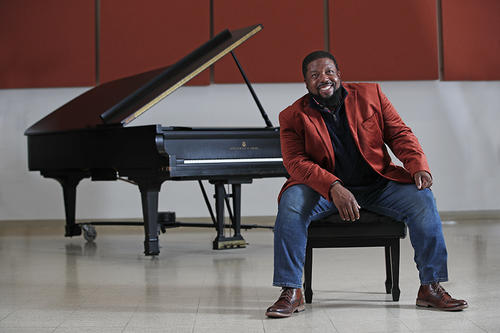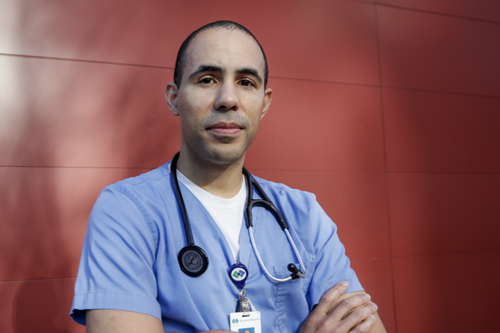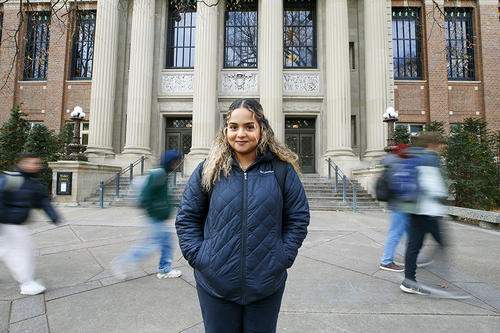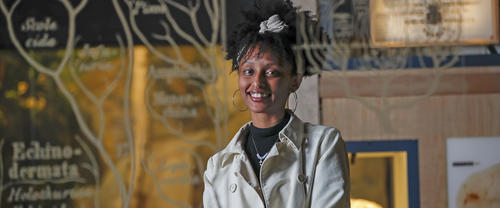
So that children can grow into flowers
As an aspiring teacher of color and a woman of Ethiopian descent, Hermela Solomon wants to leave a lasting imprint on children and guide them toward success and, as she says, “expose students to the beauties of a diverse world.”
At the University of Minnesota, Solomon has found numerous opportunities to supplement her elementary education major, as well as minors in racial justice in urban schooling and teaching English as a foreign language.
As a student worker with the U of M’s Bell Museum, she sat on the museum’s Diversity, Equity, Accessibility, and Inclusion (DEAI) committee and helped make the Bell’s volunteers’ newsletter more engaging by incorporating DEAI content.
She’s also co-vice president for the Ethiopian Student Association and an event coordinator with Choreos, a U of M dance organization that brings together the diverse Twin Cities dance community around a range of styles, including heels, Bollywood, Afrobeats, hip-hop, K-pop, and more.
And by working as a tutor with Prepare2Nspire, a program of the U of M’s Urban Research and Outreach-Engagement Center, she was able to provide one-on-one tutoring to middle and high school students in north Minneapolis.
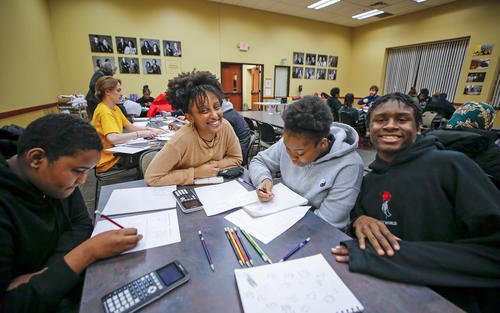
Here, Solomon talks about finding her identity, her experiences at the U of M, and what teaching children means to her.
My parents are from Ethiopia. I was born here and grew up in the southern (Minneapolis) suburbs so I'm a first-generation Ethiopian American. I came to the U of M knowing that I wanted to do elementary education—I’ve volunteered with kids since I was in middle school. It's the only thing that I really saw myself doing.
From middle school to high school I was learning Spanish. I think I was trying to be more connected with my Ethiopian identity, trying to accept it through learning languages. But it made me ask myself, “Why are you trying to gain different linguistic and cultural skills without accepting your own culture?” That didn't make sense.
It was a teacher who took the time to recognize her that made her feel like her identity and culture mattered.
In about eleventh grade I had a transformative experience with a Spanish teacher. I was the only Black student. He called on me in class, and he would find ways to intersect cultures. And that made a huge difference to me because he was including things like relations between Spain and Ethiopia, and all these random facts, and then asking me things like “Where can I get Ethiopian food? How do you say certain words in your language?” A teacher had never asked me that. I'd never had a teacher who incorporated my history into the curriculum.
That was an eye-opening experience in the sense that it helped me validate that my culture is unique, that it is important and significant. It's worth teaching others about.
Her experiences at the U have helped to further inform her passion for inclusive education.
The curriculum here highlighted to me how my educational upbringing lacked certain aspects that related to my identity, and how that could have helped me understand other people's identities, and help them understand mine.
[It’s important] to find ways to incorporate students’ identities in the classroom in order to create an environment where they understand that everyone's different. They come with different things, with different backgrounds. They have different cultures. Valuing that in the classroom matters.
The thing is, some students feel shame, like “My food is different than the majority of the other students, or my hair is different, or the clothes I wear are different.” But we can acknowledge our differences together and try to connect with students in a way where we’re creating a cultural exchange. We can say, “That's so cool. That's not weird. That's beautiful.” If they mention something about their culture, be interested. “Oh, your culture is different. That's a great thing. Mine is different, too.”
Solomon’s undergraduate field experiences teaching in inner-city schools in Minneapolis were also eye-opening.
I think teachers in the past who have not addressed race and identity in the classroom were just maybe scared or uncomfortable of the discussion if they’re white. They don't know how to go about it. They don't want to make kids feel different. And then there’s the argument that, “Teachers don't want to put pressure on white students to feel like they did something wrong.” But I think there is a way to navigate that, and for me, having an Ethiopian cultural background definitely supports that.
Solomon often uses a poem she wrote in high school while reflecting on her nightly practice learning Amharic—an Ethiopian dialect her parents taught her and her three siblings—to sum up how she feels about educating children.
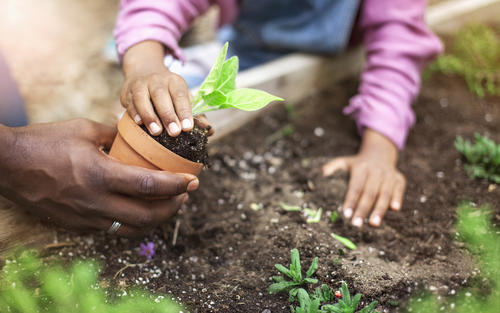
The vocabulary word for that evening was አበቦች—flowers. And that’s what children are, she says.
